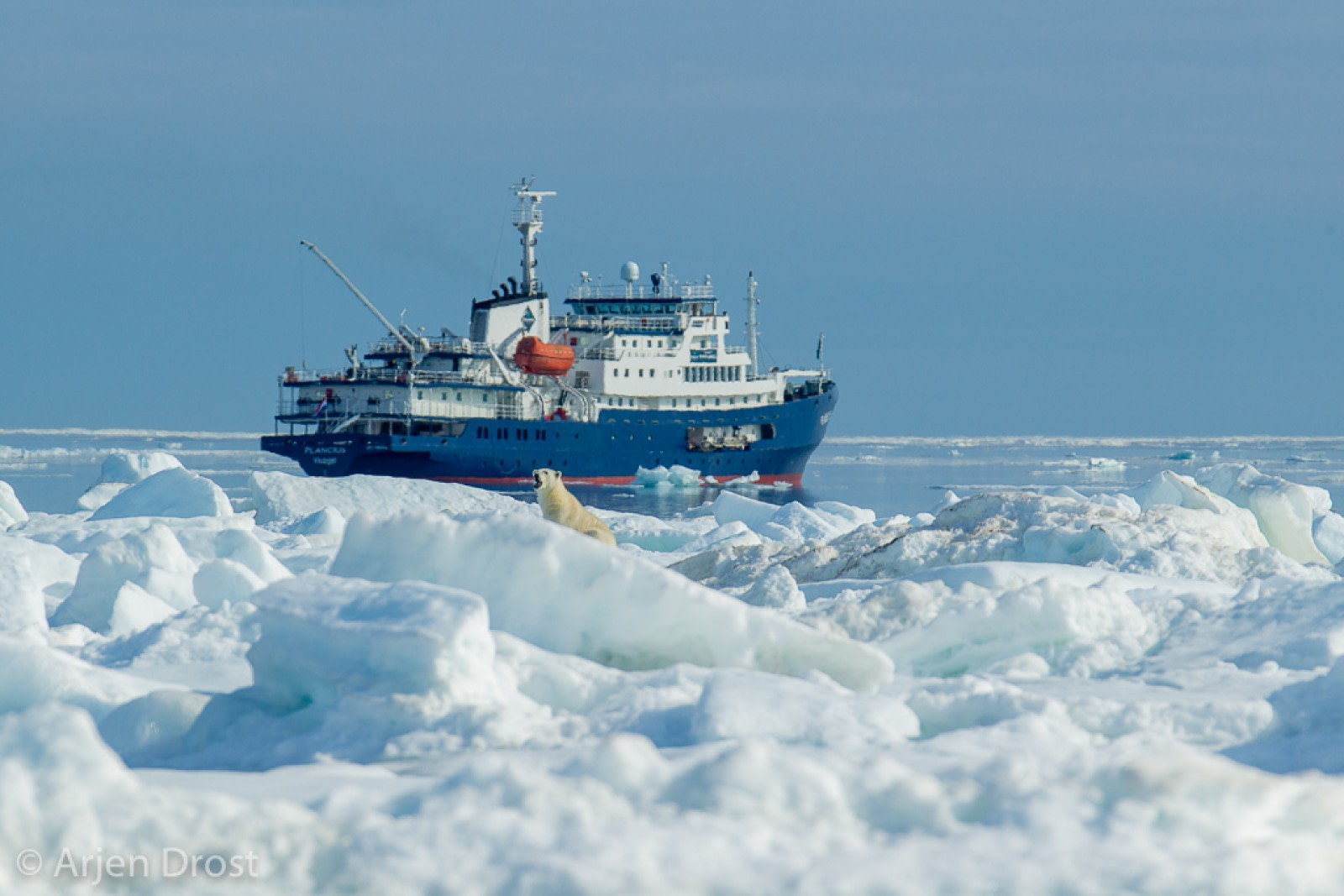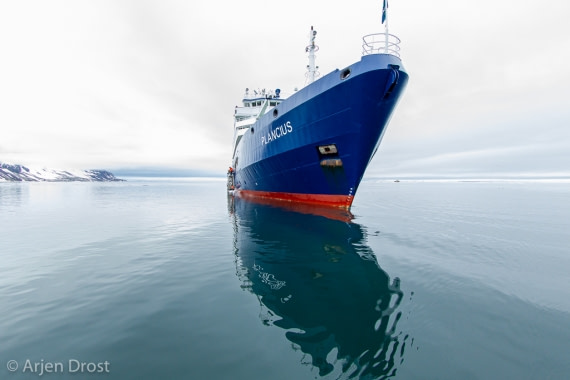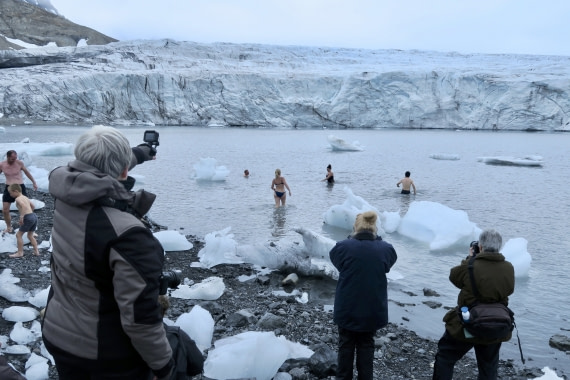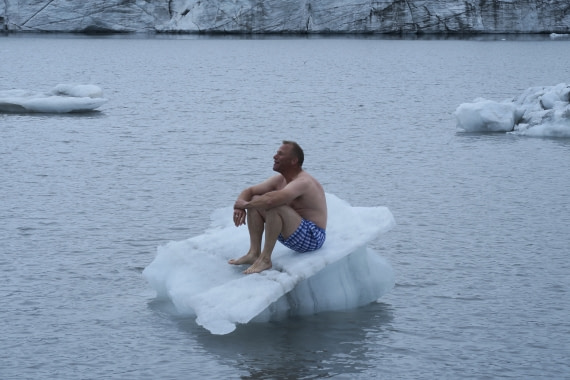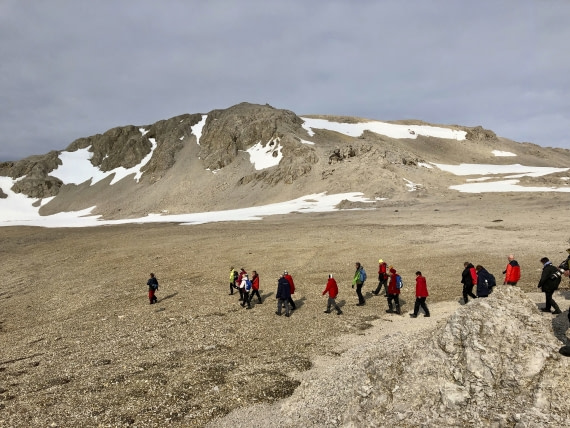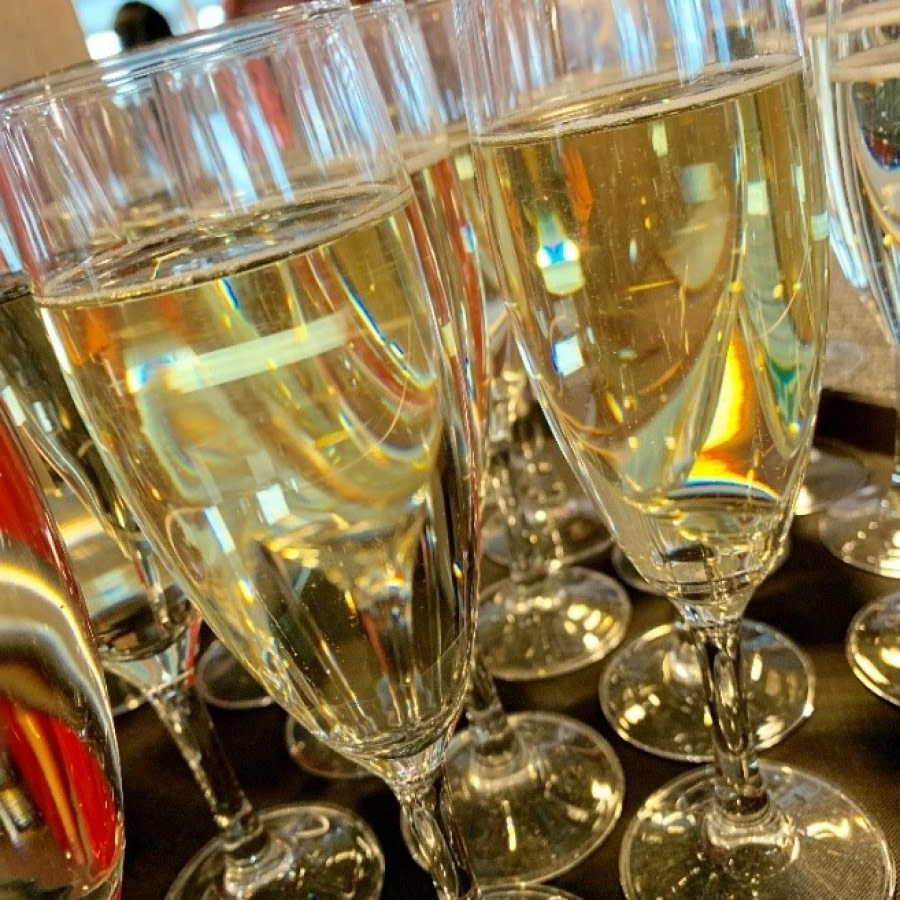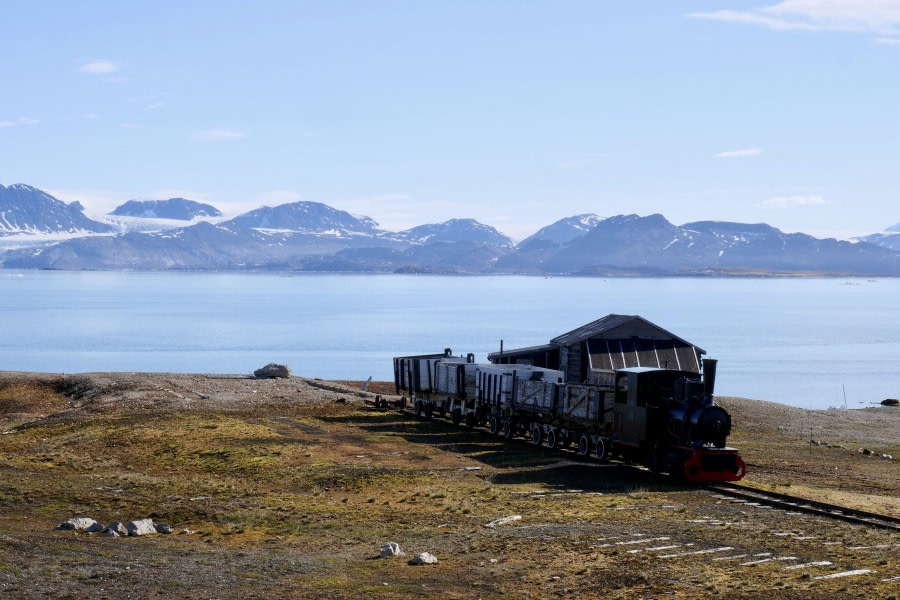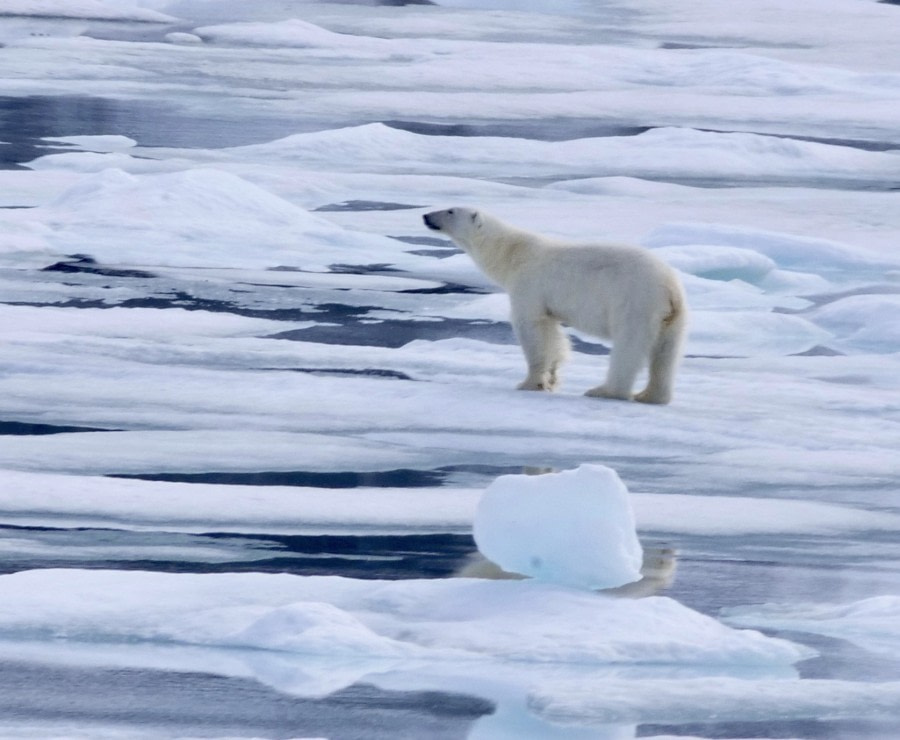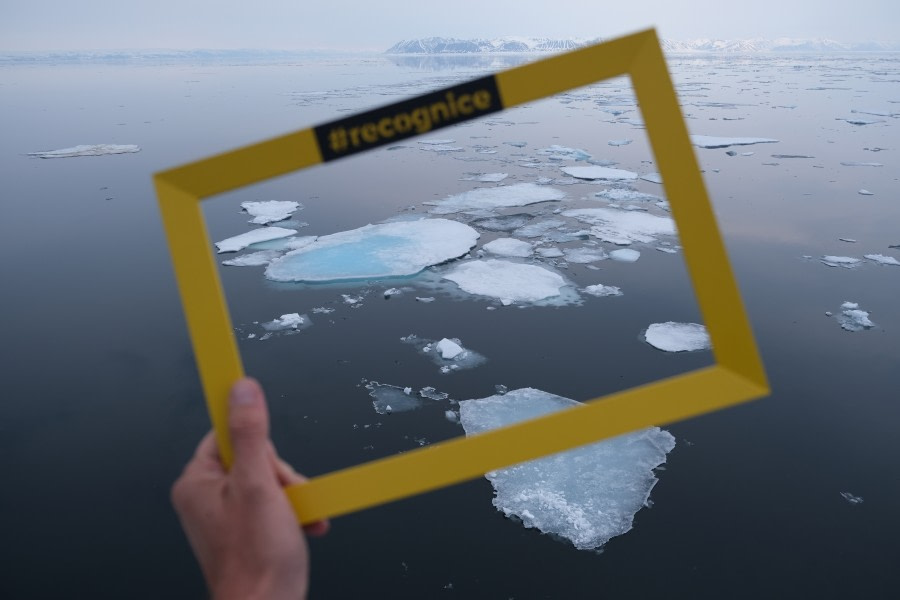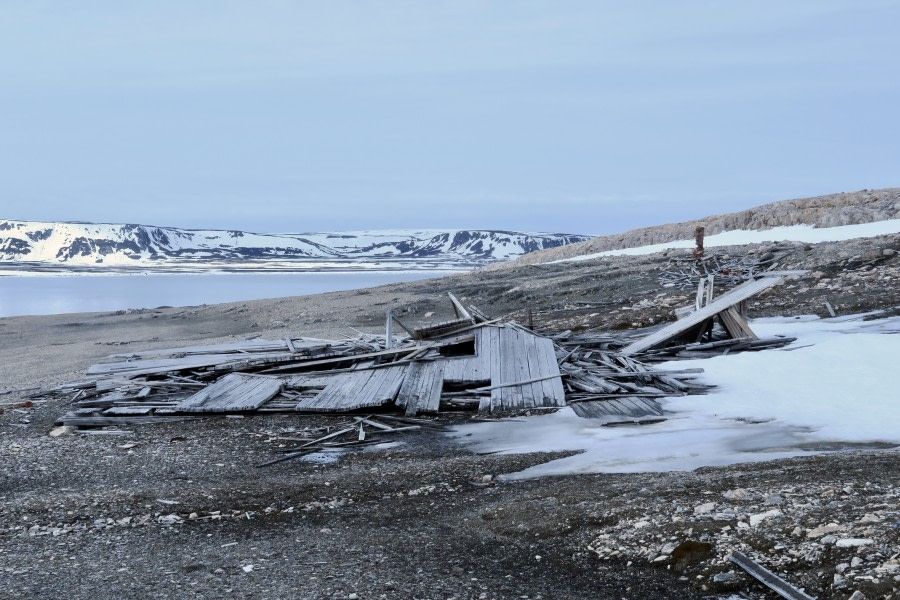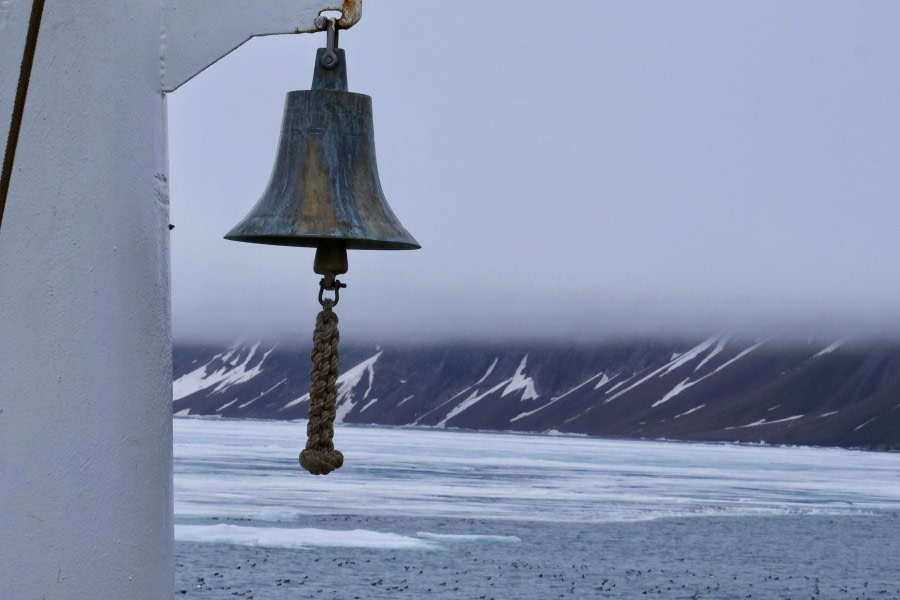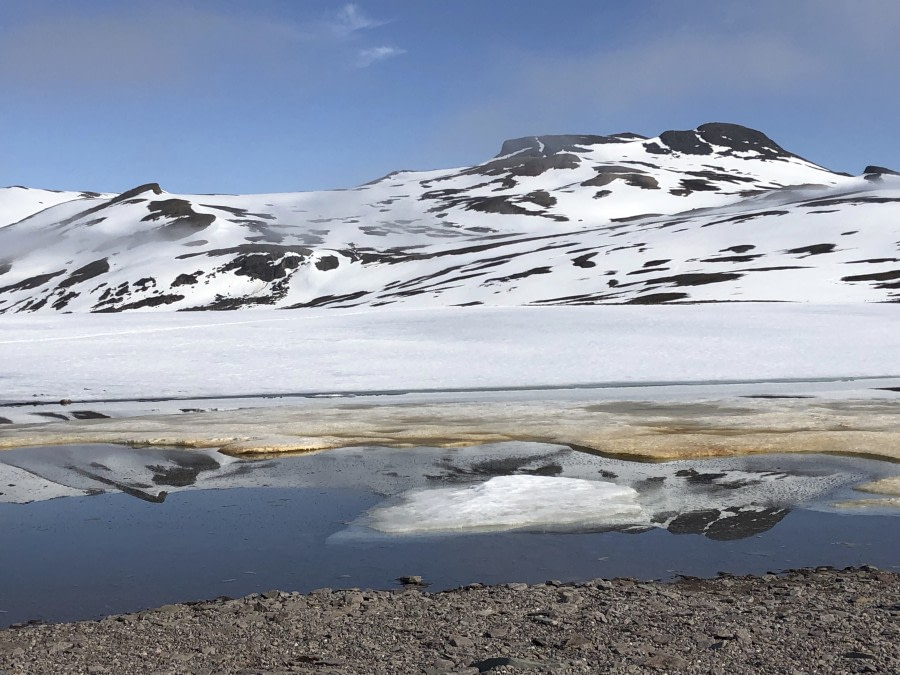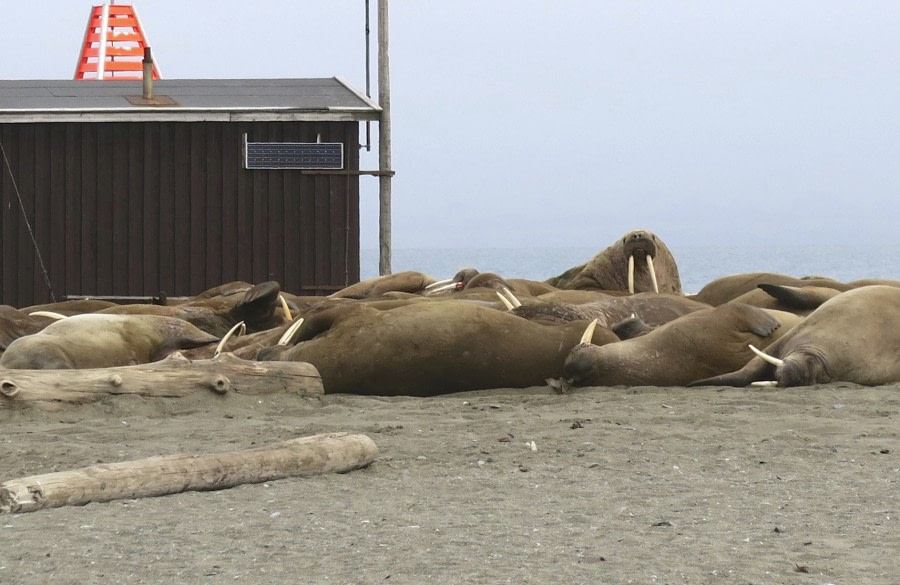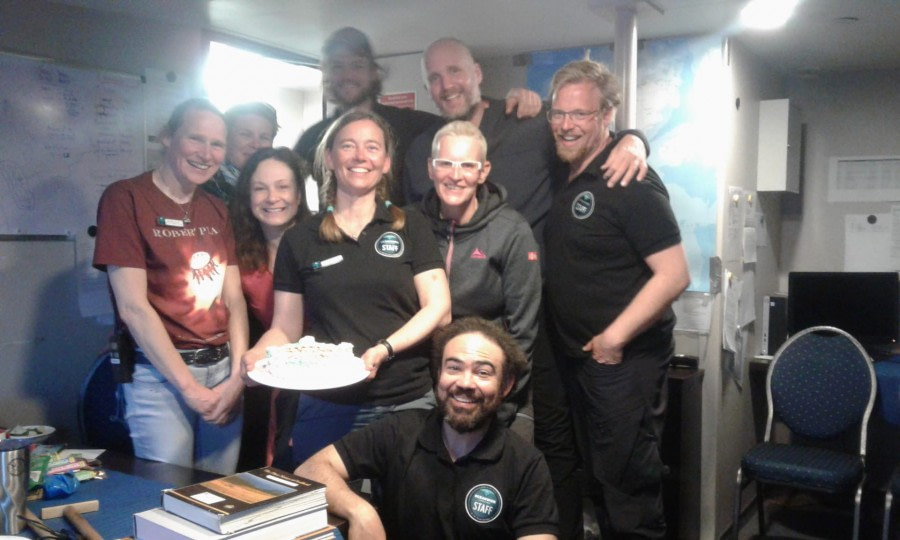| Date: |
09.07.2019 |
| Position: |
79°38.7’N - 013°35’E |
| Wind: |
var 0-1 |
| Weather: |
partly cloudy |
| Air Temperature: |
+9 |
We sailed overnight, aiming to enter the famous region where Woodfjord and Liefdefjord are located. Our original plan was to visit one of the most famous cabins of the area named "Texas Bar", a cabin that is not a bar and that is not related whatsoever to the American state of Texas. Anyhow, our original plans were thwarted by the weather conditions, because at the landing site, we encountered winds gusting up to 40 knots.
Consequently, we changed our plans and decided then to explore the ice flows floating along other regions in the fjord, aiming to find a more secluded place to undertake a landing. This was very early in the morning just before breakfast. However, there was a lot of fast ice floating in this fjord system and to our surprise, we had the chance to find a very sleepy polar bear resting on top of the ice. Hence, our expedition team devised a plan to have a better view of this animal. While our officers kept a watchful eye on the Bear, the expedition team proceed to launch the zodiacs immediately after breakfast, and soon, all our guests guided by the expedition team formed an armada of zodiacs.
We approached the ice floe and started to look for a good angle to have a better view of the bear. We managed to find a few suitable spots around the ice flow, and our patience was rewarded with many good pictures. The specimen we saw was probably a young male which was not very active due to the intense heat that prevails over the day. We had also the chance to discover a sleeping seal floating in the ice which was probably a ringed seal.
In total, we spend about 3 hours in the zodiacs, and we came back to the ship around 12:00 to enjoy a good meal.
After lunch, our original plan, was to make a zodiac cruise along Monacobreen, a very scenic glacier located at the end of Liefdefjord. This is one of the most visited glaciers in the northern side of Spitsbergen. However, the thick and dense fast ice thwarted again our intentions and for the second time today, we had to change our original plans. We then decided to visit another small hut named "Villa Oxford", located in Worsleyhamna. Worsleyhamna is a natural little harbor located on the eastern side of Reindsdyrflya, on the northern coast of Liefdefjorden and is named after Commander Frank Arthur Worsley (1872-1943) who was a British naval officer, born in New Zeeland who was the leader of a British Expedition to Spitsbergen and Franz Josef Land in 1925. (Curiously, Frank Worsley was also the captain of the Endurance, Ernst Shackleton's famous ship stranded in Antarctica). To reach the beach we had to make a relatively long zodiac ride, since the waters surrounding the area, are relatively shallow, and our vessel could not come closer to shore. Here we found a cabin, named "Oxford Villa", and the remains of a World War Two German weather station named "Kreuzritter".
This station had a tragic incident in which the station's leader died while handling explosives. We could see the grave of the German officer as well as some scattered pieces of wood that belonged to the station. The hut named "Villa Oxford" was built by Hilmar Nøis, the famous trapper who build other cabins elsewhere in Spitsbergen. It is worth to notice that from this position the British aviator, George Binney made flights to undertake the first aerial photography over some parts of Nordaustland.
At this position we could also appreciate the Reinsdyrflya, a long ridge on which it is possible to appreciate many Svalbard reindeers walking in the distance. Three groups were organized, those undertaking a long, a medium and a short walk. Each group had the chance to have a closer look at some of the fauna such as Svalbard Reindeers, a couple of Red Throated Divers and Common Eiders. It is worth to notice that a couple of the reindeers were old males displaying well developed antlers.
At the end of the landing, we went back to the ship where the crew prepared our dinner in the aft deck which this time was a delicious BBQ with drinks. All our guests very much enjoyed this dinner outside, thanks to the delicious meal as well as thanks to the wonderful weather we enjoyed.
